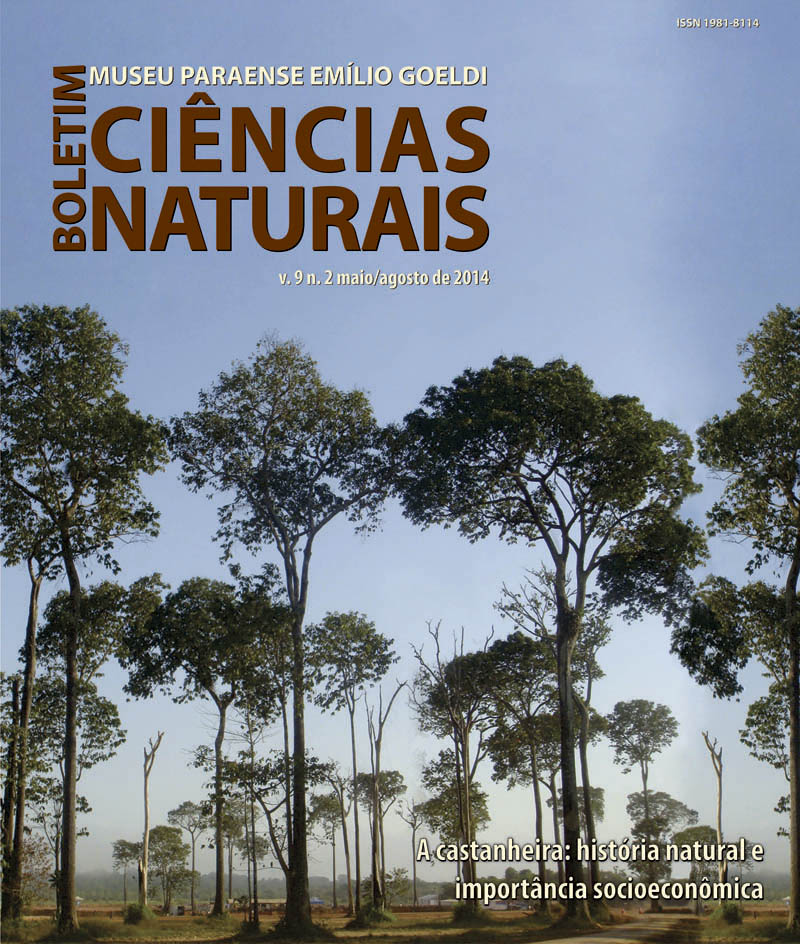Primary dispersal of Brazil nuts fruits (Bertholletia excelsa Bonpl.): importance to species management and conservation
DOI:
https://doi.org/10.46357/bcnaturais.v9i2.531Keywords:
Extraction, Non-timber forest product, Collecting period, Biology of species, FenologyAbstract
The Brazil nut (Bertholletia excelsa Bonpl.) stands out amongst other non-timber forest product in bringing together economic, social and ecological benefits. However, appropriate management practices for the harvesting of this species still need to be established in order to support both extractivist livelihoods and maintain viable Brazil nut populations. We conducted this study to evaluate the dynamics of the primary dispersal of Bertholletia excelsa fruits in a naturally occurring Brazil nut grove in the Brazilian state of Acre, and in doing so provide guidance regarding the most appropriate harvesting period. During the fruit fall period we monitored 20 trees, counting and marking their fruits according to when they fell. Fruit fall was shown to occur in peaks, with virtually all fruits having fallen within 50 days. The results indicate that the collection of Brazil nuts should start from the eighth week after the start of fruit fall with just a second visit to collect the remaining fruit, thus improving both the quality and efficiency of productivity.
Downloads
Published
Issue
Section
License
Publication means fully assigning and transferring all copyrights of the manuscript to the journal. The Liability Statement and
Assignment of Copyrights will be enclosed with the notice of acceptance. All the authors must sign the document and return it to the journal.








